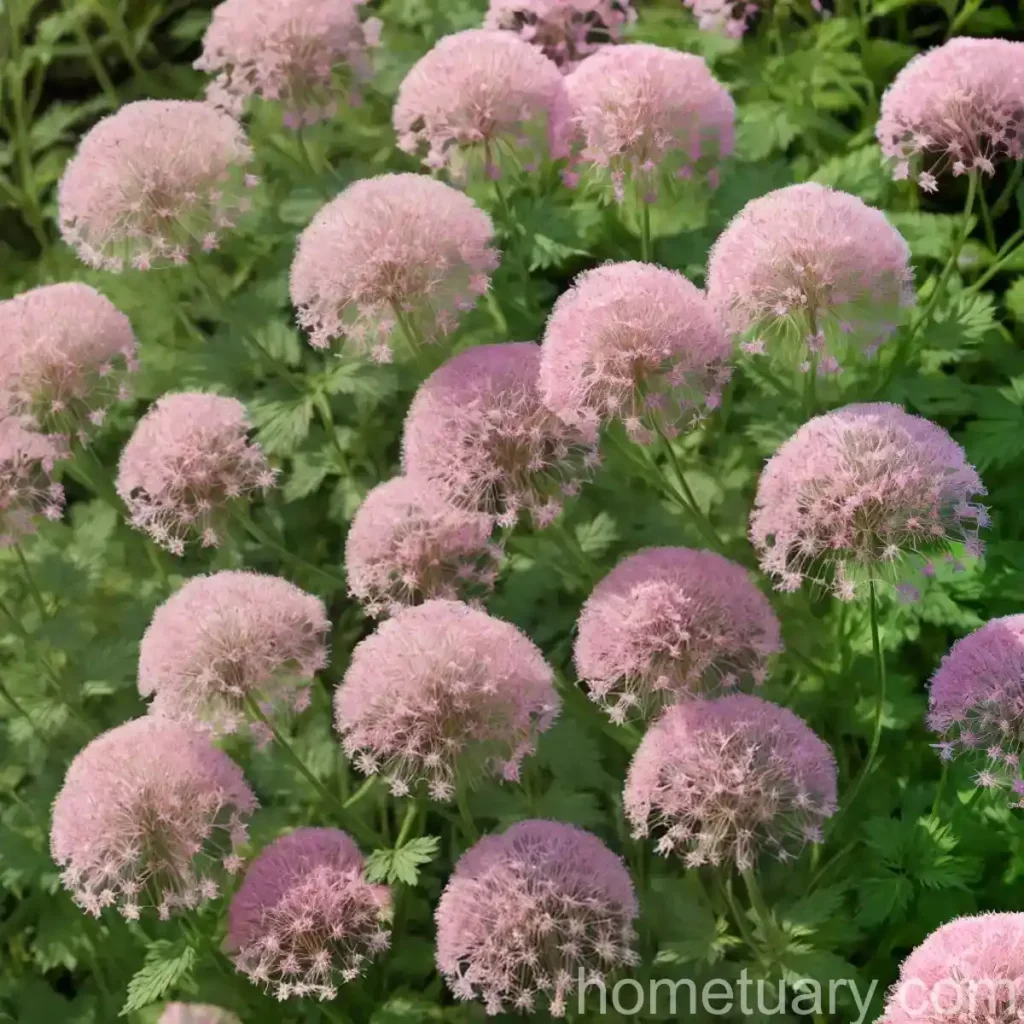All About Dropwort (Filipendula vulgaris ‘Multiplex’)
Dropwort, scientifically known as Filipendula vulgaris ‘Multiplex’, is a charming perennial plant that belongs to the Rosaceae family. It is a native of Europe and Western Asia, and its elegant appearance and ease of cultivation have earned it a special place in gardens and landscapes. This blog post delves into the fascinating world of dropwort, exploring its culture, uses, care, and much more.
What is Dropwort?
The dropwort plant, also referred to as Filipendula vulgaris ‘Multiplex’, is a perennial herb that typically grows to a height of 30 to 60 centimeters. Known for its delicate and feathery foliage, this plant produces clusters of tiny, creamy-white flowers in summer, which give it an enchanting, airy appearance. The leaves are deeply cut and resemble those of the related genus, Astilbe. Dropwort rarely fails to add an ethereal charm to any garden or landscape it inhabits.
Key Takeaways
- Scientific Name: Filipendula vulgaris ‘Multiplex’
- Common Name: Dropwort
- Family: Rosaceae
- Plant Type: Perennial
- Origin: Europe, Western Asia
- Blooming Season: Summer
- Height: 30 – 60 centimeters
- Flower Color: Creamy-White
Culture
Water
Dropwort generally thrives in moist, well-drained soil. During its active growth period, it benefits from regular watering to maintain the soil moisture. However, it is also essential to avoid overwatering, as this may lead to root rot and other issues.
Sunlight
In terms of sunlight, dropwort does best in partial shade to full sun. While it can tolerate some shade, providing ample sunlight will typically result in more robust growth and increased flowering.
Soil
The plant prefers slightly acidic to neutral soil with good drainage. It can adapt to different soil types, including loamy, sandy, and clay soils. However, it is crucial to ensure that the soil does not become waterlogged, as this can be detrimental to the health of the plant.
Uses
Dropwort, with its delicate appearance and lovely flowers, is commonly used in ornamental landscaping and gardening. It is often featured in perennial borders, rock gardens, and woodland gardens, where its graceful blooms and foliage add a touch of elegance. Furthermore, due to its low maintenance requirements, it also serves as an excellent choice for beginner gardeners.
Fertilizer
When it comes to fertilization, dropwort is not overly demanding. A balanced, all-purpose fertilizer applied in spring can help support its growth and flowering. However, it is essential to follow the specific guidelines for the fertilizer to avoid overfeeding, which can be detrimental to the plant’s health.
Pruning
Pruning generally involves removing spent flowers and any damaged or diseased foliage. This not only helps maintain the plant’s appearance but also encourages better flowering. Pruning is typically performed after the blooming period has ended.
Propagation
Dropwort can be propagated through division or by sowing seeds. The division method involves separating the plant’s crowns in early spring, while seed sowing is typically carried out in late winter or early spring. Both methods can be effective in producing new plants.
Container Popularity
For gardeners with limited space or those who want to enjoy dropwort on patios or balconies, growing it in containers can be an excellent option. Container-grown dropwort can bring its airy charm to a variety of settings, from urban gardens to countryside retreats.
Container Common Diseases
When growing dropwort in containers, it is essential to be mindful of potential diseases that can affect the plant. Common issues include powdery mildew, leaf spots, and root rot. Ensuring proper drainage and airflow around the plant can help prevent these diseases.
Common Pests
While dropwort is relatively resistant to pests, it can sometimes be affected by aphids, spider mites, and sawfly larvae. Regular inspection and appropriate pest control measures can help minimize the impact of these pests.
Disease Diagnosis
Diagnosing diseases in dropwort involves observing the plant for telltale signs such as wilting, yellowing leaves, or unusual spots or growths. Identifying the specific symptoms can aid in selecting the appropriate treatment or management strategy.
Botanist’s Tips
As a botanist, I would recommend incorporating dropwort into diverse garden designs, including traditional borders, naturalistic wildflower meadows, and container gardens. It serves as an excellent companion plant to various species and can contribute to the overall health and biodiversity of the garden.
Fun Facts
- In traditional medicine, dropwort has been used as a herbal remedy for various ailments, including digestive issues and skin conditions.
- The plant’s delicate flowers have symbolic significance in different cultures, often associated with themes of purity and grace.
Links to External Resources
For more information on dropwort (Filipendula vulgaris ‘Multiplex’) and related topics, please visit the following resources:
- Royal Horticultural Society – Filipendula vulgaris
- Missouri Botanical Garden – Dropwort
- University of Maryland Extension – Perennials: Filipendula
This comprehensive guide has shed light on the captivating world of dropwort, providing invaluable insights into its culture, uses, care, and much more. Whether you are a seasoned gardener or just beginning to delve into the realm of plants, dropwort stands as a remarkable addition to any landscape, offering its timeless beauty and natural allure.















